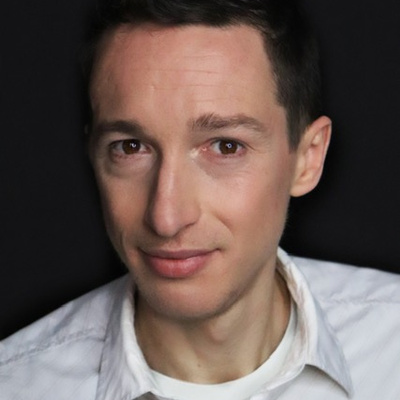Beyond Smiles and Splits: Closure and Conclusions
Many artists lose a sense of belonging and can’t seem to find their footing once a show is wrapped and suitcases are packed. Casts become families and dressing rooms turn into the most intimate spaces. How does one turn the page, and go back to their other family and intimate space? How can circus artists get closure and move forward with peace of mind?
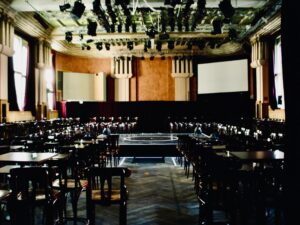
In his book White Lies, Canadian anthropologist John Steckley writes about the belief that Inuits have 52 different words for ice and snow. Circus artists might have just as many for the people they go on stage with. Are they colleagues, friends, cast mates, partners, siblings, or acrobatic acquaintances? With circus families welcoming new artists under their tents every year and theaters changing their line-ups even more often, bonds are created faster than a quick-change! There are limited engagements and long-running productions where several people go on the exact same track over years. Regardless of their lifespan, all shows have something in common: they will come to an end. Because of the intensity with which many devote themselves to what is more of a lifestyle than a job, should circus artists give as much thought to this final performance as they do to getting ready for opening night? Is a cast who goes into their last show as if it were a regular performance bound to hit a wall once the adrenaline wears off? What happens when the lights go out? What’s life like beyond that final performance getting stricken from the calendar?
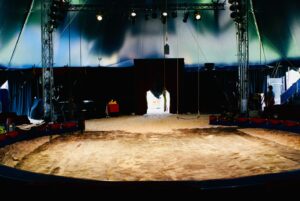
By nature, artists would rather focus on what precedes than what follows their performance. Coaches highlight the importance of warming up with the hope that young artists will maintain good preparation habits long after making their stage debuts. Choreographers schedule rehearsals and spread scenes over several weeks to avoid rushing their casts. These performers are first introduced to the movements, learn them, and see the piece as a whole before sharing it with an audience. The informal meeting where the cast and crew are first introduced tends to be lengthier and calmer than a rushed farewell embrace next to sets and lights being torn down. The fear of a torn ligament or twisted ankle surpasses that of the post-show blues and an unfinished artistic affair.
On the one hand, it’s easy to argue that final performances are scheduled and should not come as a shock to anyone able to read a calendar. On the other, rare are those who pace their emotional involvement with a show and its team as well as their energy on a two-show day. Relationships are created at a faster pace than full-scale productions when creative minds meet, and only this small circle of people seems to really understand what they’re going through. Consequently, being rushed onto a different path than those who have become a familiar, recognizable, and reassuring presence can throw even the most stable wire walker off balance!
Shows really become families since most people involved are transplants. Casts are made of artists who came from elsewhere to pursue a dream. They spend holidays together, take the stage on Christmas, New Years, and their birthdays. Performing as a unit for weeks or months also means witnessing its members falling in and out of love, having babies, and dealing with family deaths. Friendships are built through and in spite of hardships. Circus families who have been touring their countries for generations start seeing this year’s porter and hand balancer as one of their own through highs and lows.
__
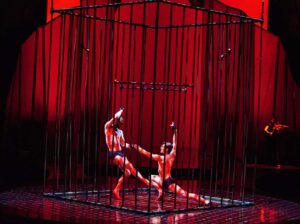
“A cast only exists because of their show. It’s what connects them all,” says Arnaud Boursain, who spent five years on Cirque du Soleil’s Zumanity. In spite of remaining in Las Vegas long after the show’s closing, the French artist admits that there are many colleagues he hasn’t seen nor spoken to since they last were on stage in March 2020. That was his second finale on Zumanity, and emotion fills his voice as he recalls both experiences.
“November 26th, 2017, was one magical, exceptional night! It was the end of a three-year contract and I couldn’t have been prouder; I had never called out, created great bonds with the amazing cast and crew, and managed to visit 17 states in that run! We celebrated and laughed all night as a group, and it was a perfect way to bring closure to that artistic and human chapter.”
Boursain knew then that his contract was coming to an end, and felt the need to move elsewhere to keep on growing artistically and avoid giving less than his best. His focus remained entirely on the show during his final weeks as he wanted to be in the present, honor these new connections, and leave with a sentiment of having done a good job until the very end. Whilst freelancers are expected to always think ahead and plan their next contract, it is crucial to remain in the moment, in the current show, rather than picturing the new stage that awaits. Each production deserves its cast’s full attention. The French artist’s vivid memories of that final show in 2017 are priceless to him.
__
Cut to March 2020, when the lights when dark on all stages for public health issues. Boursain was in the middle of his second contract on Zumanity when he and his cast mates got a two-week break notice so the company could better understand the crisis the world was facing. Six months later, they found out that their March 15th performance had been Zumanity‘s final. Unlike other Cirque du Soleil productions, theirs would not reopen, and Boursain would no longer strut down the stage in stilettos.
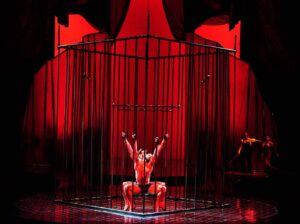
“I was surprised and disappointed. Surprised because this closing didn’t make sense to me, artistically and financially speaking. Disappointed by the way the news has been shared: on a Zoom call with the cast spread out in the city. I know that gatherings were impossible at the time, but I wish they would have thought of a more human way to pass their message.”
Unlike in 2017, when he had time to plan his exit, Boursain and his colleagues performed their last show unaware that they’d never go on as this cast and in those cues again. He reckons that moving on might have been easier for him because he had already had his dream finale. There are images that people tend to capture from their last show: how the lights hit the set and create particular shadows on stage; an artist’s smile when they come down from their apparatus; the way a curtain falls on a specific cue; how uniquely dynamic a dancer gets when the music gains momentum. Every artist has an inner slideshow of productions they’ve been a part of. They are filled with things that their eyes alone caught at different moments, and having the time to take these mental pictures one last time can help with the closure process. Zumanity‘s cast didn’t get that, but Boursain made sure that one image from that second go-around would be immortalized: a single picture that meant more than the biggest farewell party. In one quick moment, he and the seven dancers he’d taken under his wing paused on the stage that brought them together. “We were only given a few minutes to get our things from the dressing room, there were no formal goodbyes, but getting this picture taken before leaving the theater really mattered to me,” says the dancer with no regrets.
__
A show exists because there are people bringing it to life and others watching it. Getting closure is therefore more complicated if said show no longer lives. Boursain firmly believes that ending a show on somewhat of an ellipsis is nevertheless possible. Regardless of whether one chose when they’d take their final bow, looking ahead and taking steps to keep on growing artistically and personally is how some get their groove back. Given how time-consuming being on stage can be, focusing on smaller, more personal projects over which one has full control is one way to fulfill artistic needs that can no longer be satisfied by being on stage.
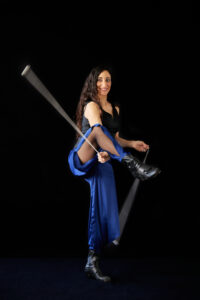
These little forms are what kept Diane Renee Rodriguez inspired and on stage, from the moment she could talk and walk. The vibrant woman learned to fly at Montreal’s National Circus School and fell in love with Latin dances, especially with boleadoras, in Argentina. It’s this solo piece that brought her to the Tigerpalast in Frankfurt. She looks back at her five-month run with fondness and no sense of grief whatsoever.
“Performing two shows every night, four nights in a row, can be very intense. I felt very fulfilled from the season, satisfied with everything I had lived, but also ready for a break. The break can be satisfying too in those circumstances.”
A cast that was extremely supportive through ups and downs and faced uncertainty when the rise of a certain virus was around the corner is what first comes up when she speaks about this contract. Saying goodbye properly and getting one last moment of togetherness was a priority for them all. This moment is the last image she has of the Tigerpalast.
This final show didn’t feel particularly emotional to Rodriguez because an endless cycle of firsts and lasts is pretty much a circus artist’s life in six words.
“Finishing a contract is part of what we’re used to. It’s emotional, but I guess it seems less dramatic once you’ve lived and moved for so long,” she says, before admitting to bursting into tears when the curtains closed and the lights went out.
As tempting as focusing on the next adventure to avoid thinking about the end of the current one might be, Rodriguez recommends staying in the moment and not skipping any step of the established routines. Instead of getting all caught up in packing, flights, and trains, she took the same amount of time to hit the stage with her bolas and do her makeup before each show. The future isn’t worth sacrificing a present that won’t come back. Taking the time to look, listen, and better understand the person and artist one has become over the course of a handful or hundreds of performances is somewhat of a post-show digestive process that can last a minute or a month.
__
Each show changes artists and every stage, every venue, can be a place of growth. Tents and theaters are second homes and dressing rooms become the most personal spaces. There are acrobats who can board a plane without looking back at where they were, and others who feel like they’re leaving a piece of themselves behind each time a show closes. There is no ultimate way to move on to the next chapter, but every artist can conclude each in a way that feels right and satisfying at that time and in that place.

Images shared by Martin Frenette and the two featured artists. Rights to Circus Monti for images from their productions (circus ring and Estelle Baugin photos). Photo of Rodriguez credited to photographer Dominik Mentzos....
Do you have a story to share? Submit your news story, article or press release.


